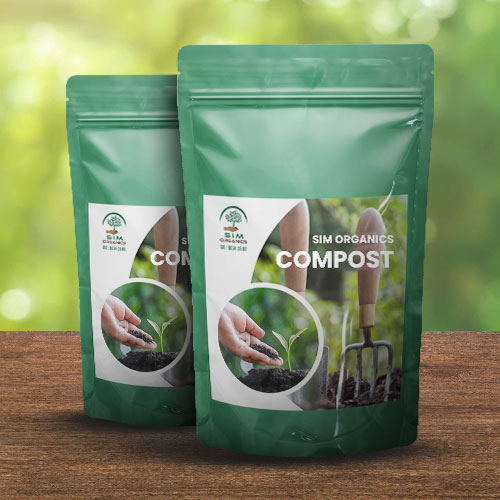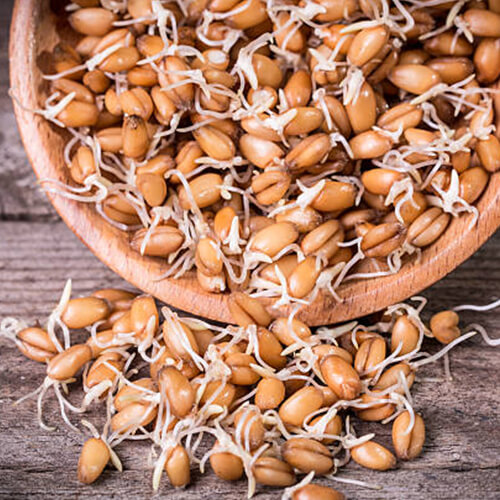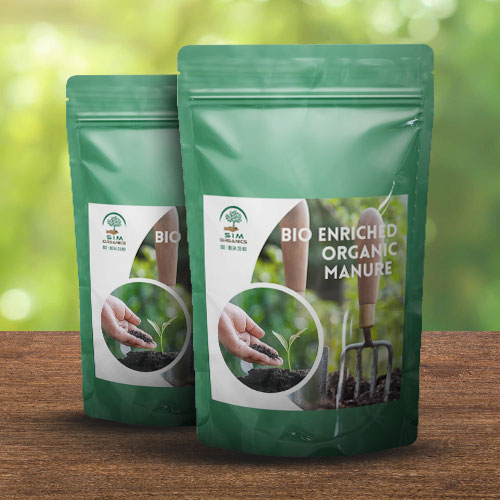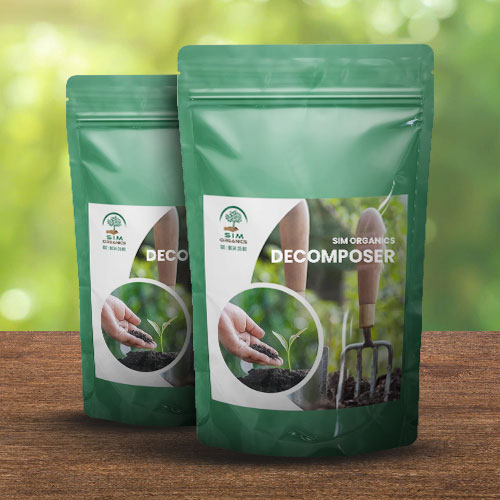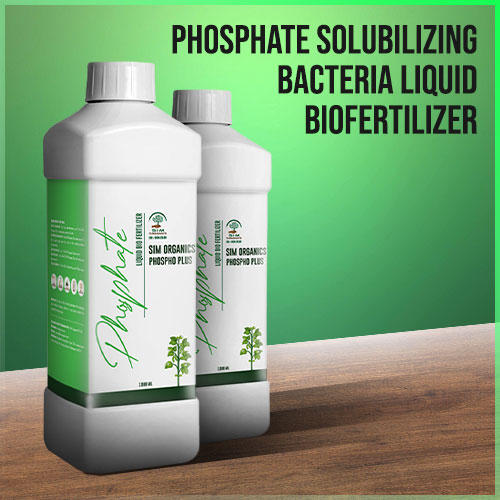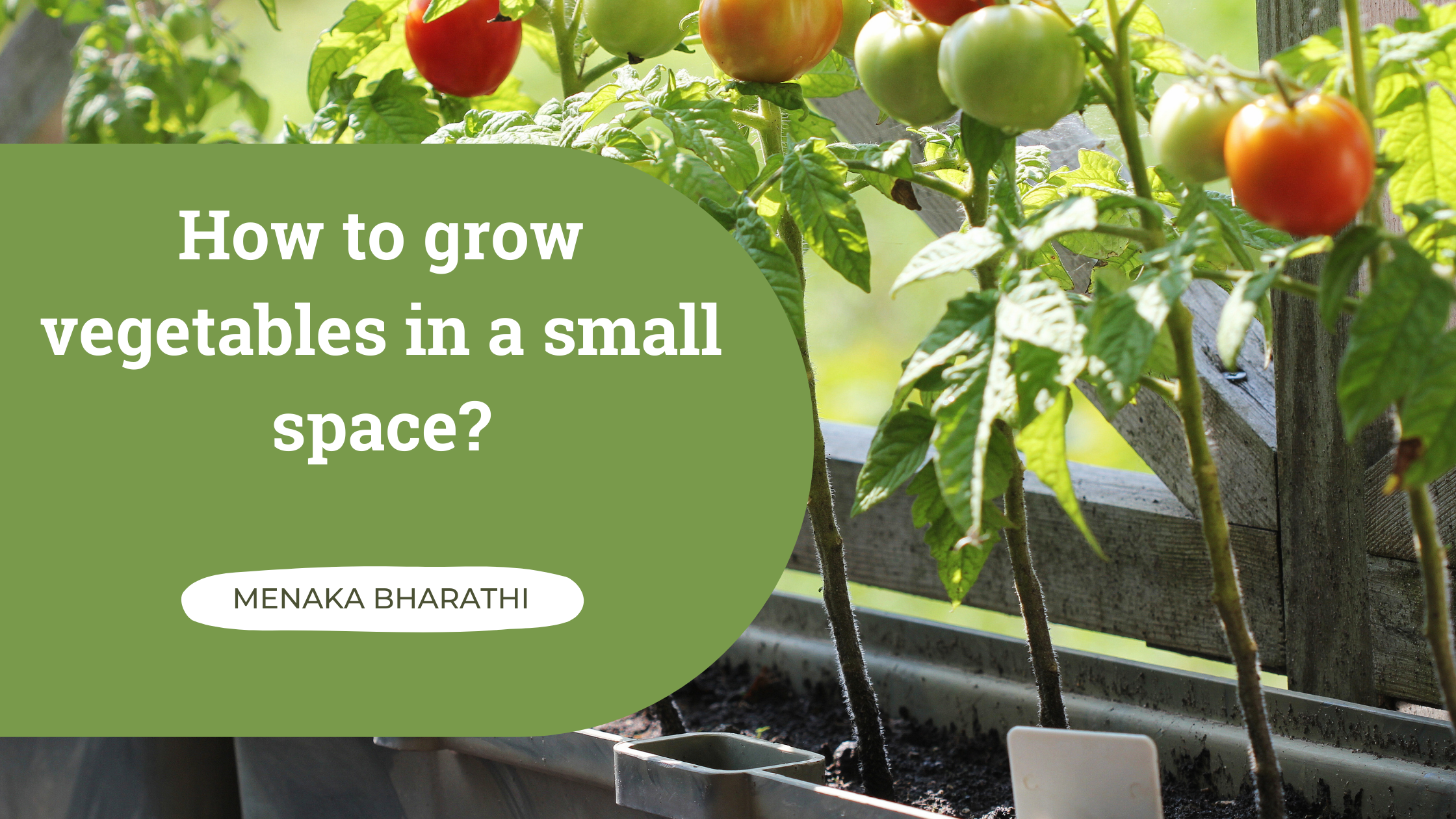
Growing your own organic vegetables is the need of the hour, not because you do not get vegetables in the market but because what you get are laden with all kinds of poisonous chemicals that it is better to not consume them.
There are pesticides, insecticides, fertilizers and chemicals used for ripening, flowering, fruiting and so on. All this has brought about a situation that every vegetable or fruit that you eat is full of chemicals, chemicals and chemicals.
Of course there are organic vegetables available in the market, a lot of gratitude to all those farmers out there who are taking efforts to keep people healthy, but unless and until we know exactly who the person growing them is- the risk still prevails.
With all that said, I would want to tell you this- growing basic vegetables at home for our consumption is the most easiest and safest solution for the you and your family.
So every time I tell this, the first response I get it- where is space?
True, with urban lifestyle, space sure has become a huge bottleneck, however, it is not impossible to grow our own food within the space available. One basic thing I would always prefer is having a nutrigarden in small space that would be sustainable and give you year round food that you can harvest freshly and use on a daily basis.Lets see what type of gardening can give you exactly this.
Terrace Gardening
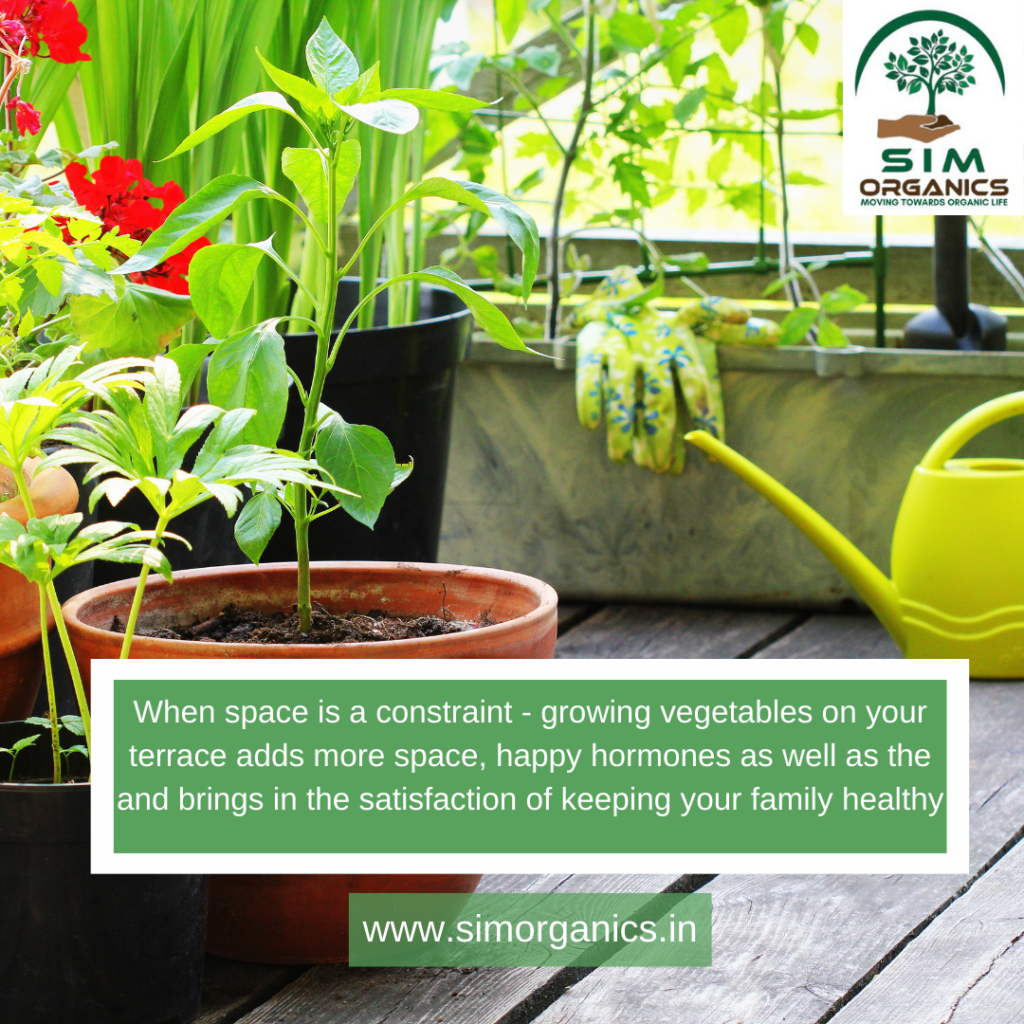
Terrace gardens are a great way to make the most of a small outdoor space. Almost all types of vegetables can be grown in terrace gardens, including cherry tomatoes, cucumbers, bell peppers, and herbs like basil, thyme, and rosemary. Terrace gardens can also be used to grow leafy greens such as lettuce, spinach, and kale.
You need to learn and understand the direction and amount of sunlight your terrace gets, plants that thrive in containers and don’t require a lot of space to grow and also the right amounts of nutrition each plant requires.
To grow vegetables in terrace gardens, it’s important to choose the right type of soil mix or the substrate that can support the plant completely. You can prepare your own soil mix, the proportions of which is given in the post here, or buy our tried and trusted ready to use potting mix which we have carefully tailored according to needs of vegetable plants that grow in containers.
Our soil potting mix contains the right amounts of manure, aeration promoting compost and coir mix, macro -micro nutrients for plants, organic extracts that reduct soil borne pests in seeds and seedlings in initial state, growth promoting hormones as well as Biofertilizer’s that will help in balanced growth, flower and fruit initiation.Click here to buy our soil potting mix with 10% discount.
A 10/10 terrace is enough to give you year round greens, herbs and vegetables for daily cooking for a family of four. Download the preliminary checklist on the requirements to start a vegetable garden on your terrace.
Microgreens:
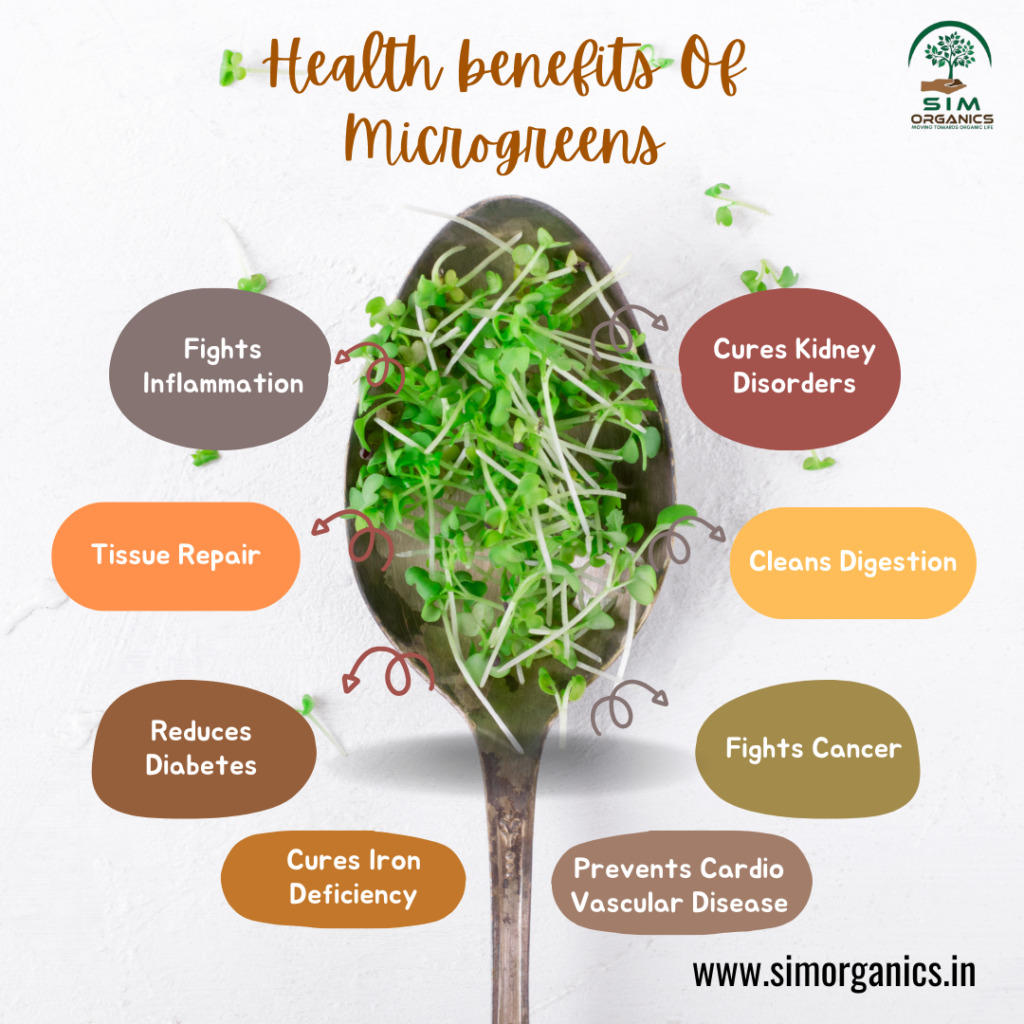
If you are a keen on getting balanced nutrition for yourself and your family, microgreens are the best choice. A microgreen is a young, tender plant that is harvested shortly after germination.
Diabetes, High Blood Pressure, Hormone Imbalance, cancer, obesity and many other lifestyle diseases have become more common these days mainly because of deficiency of micronutrients.
It is a well-known fact that a huge expanse of our population is suffering from malnutrition, where both adult and young people are affected due to a lack of micro and macronutrients (Study). An adequate amount of the different nutrients is to be provided where it is considered an essential task to drive out the malnutrition known as the hidden hunger.
Consuming plant-based foods of all kinds has been linked to a reduced risk of many health conditions, such as obesity, diabetes, heart disease, and high blood pressure, as well as a healthy complexion, increased energy, lower weight, and longer life expectancy.
Many children, youth and adults do not consume a sufficient amount of vegetables per day for many reasons including access, cost, convenience, and taste preference. Study says that in the past 15 years there has been a drop of nearly 50% in the amount of vegetables eaten by children ages 1-10, and research shows that only 2% of high-school age youth eat enough vegetables. Microgreens can help. Microgreens provide a huge return in terms of nutrients, as well as having a very inviting and pleasing taste.
They have nutrition that is almost 40 times higher than that of their well grown counterparts, they are easy to grow and are easy to consume.They are great for adding flavor and nutrition to salads, sandwiches, and other dishes. Microgreens can be grown in small containers, making them ideal for indoor spaces.
Different microgreens are rich sources of micronutrients such as
Amaranth– contains16% protein, rich in lysine; thiamine, niacin, calcium, potassium, iron, manganese, zinc, and copper, and a good source of vitamins A and C and folate.
Broccoli – has high amounts of sulforaphane, antioxidants, Vitamins A and C, calcium, iron, and phosphorus.
Lettuce – rich in lecithin, iron, boron and calcium. It contains all of the B vitamins, C, and K, folic acid, magnesium, manganese, and selenium. One of the most complete sources of vegetable protein, containing all eight essential amino acids.
Pea- good source of beta carotene, high in vitamin C and folate, chlorophyll, flavonoids and polyphenols, specifically lignans and coumetarols, which are being studied for their anticarcinogenic and anti-inflammatory activities. 17% protein.
Radish- Vitamins A, B, C, E, K, Calcium, Iron, Magnesium, Phosphorus, Potassium, Zinc, Amino Acids, Carotene, Chlorophyll, Antioxidants, Protein: 30%
Sunflower- Vitamins A, B complex, D, and E, calcium, iron, magnesium, potassium, and phosphorus. 20% protein
A wide variety of microgreens can be grown at home, including arugula, broccoli, radish, sunflower, and wheatgrass. Having 20 grams of microgreens daily nourishes your body with micronutrients the deficiency of which is the cause of major lifestyle diseases these days.
Sim organics’ Microgreens Kit ‘The Miracle Box’ provides everything needed to grow microgreens at home, including seeds, soil mix, Growth promoting organic supplements ‘SIM Magic‘, organic neem based pest repellant ‘Neemol‘ and trays for growing 5 types of different microgreens. detailed description of how to grow is given in the box.
Herb Garden

The window sills, kitchen corners and small unused spaces around your home can be used to grow herbs. In Indian homes herbs play the most important part- be it in your regular recipes or as a part of medicinal concoctions. Thus having herbs handy makes life easier.
Herb gardens are an excellent method of adding flavor to your food while also bringing some greenery to your environment. Many herbs can be grown in small containers, making them ideal for balconies, windowsills, or even indoor spaces. Some popular herbs that can be grown in herb gardens include Tulsi (Holy Basil), Coriander (Dhaniya), Mint (Pudina), Curry Leaves (Kadi Patta), Fenugreek (Methi), Cilantro (Coriander Leaves), Lemongrass (Gavati Chaha), Aloe Vera (Ghritkumari), Thyme (Banajwain), Sage (Kamarkas), Rosemary (Rusmari), Oregano (Ajwain ke Phool). The package of practices for each of the herb is given in the ebook – Common Indian Herbs and How To Grow Them. Download it for use.
When growing herbs, it’s important to choose a well-draining soil mix, as herbs don’t like to sit in water. A potting mix with added perlite or sand can help with drainage. Sim organics’ potting soil mix contains coirpith, which is known for its excellent water retention properties, making it ideal for herb gardens.
Vertical Gardens:
Vertical gardens are a fantastic alternative for growing vegetables in cramped spaces. These gardens utilize vertical space instead of horizontal space, making them well-suited for balconies, patios, or even indoor areas. There are numerous vegetables that can be cultivated in vertical gardens, such as tomatoes, beans, peas, lettuce, and various herbs such as basil, mint, and oregano.
They offer the convenience of being adaptable to suit the available space. For instance, a small vertical garden could consist of a few pots hung on a wall, while a larger garden could be constructed using shelves or trellises. The popularity of hydroponic vertical gardens is also on the rise, which uses water instead of soil.
Hydroponics:
In hydroponics, plants are grown without soil in nutrient-rich water. This method is ideal for small spaces as it requires less space and resources compared to traditional gardening methods. Hydroponics is also great for growing vegetables that may not do well in soil-based gardens.
Many vegetables can be grown using hydroponics, including leafy greens like lettuce, spinach, and kale, as well as herbs like basil, mint, and chives. Tomatoes, cucumbers, and peppers can also be grown using hydroponics. With hydroponics, it’s important to maintain the right nutrient balance in the water and provide adequate lighting for plant growth.
Conclusion:
In conclusion, growing vegetables in small spaces is possible with the right tools and techniques. Whether it’s a terrace garden, vertical garden, herb garden, hydroponics, or microgreens, there are many options for growing fresh produce at home. Sim organics biofertilizers and potting soil mix can help ensure healthy plant growth and bountiful harvests, even in small spaces.
Are you looking for a lifestyle change for good health?
Sim Organics, a pioneer in its own right, is paving the way for nature lovers like you. We offer biofertilizers, organic garden essentials like premium soil mix, and can assist you in designing the perfect garden space to suit your unique needs.
For a consultation, contact us at +91 78801 66671 or email us at contact@simorganics.net.
Our solutions are also ideal for larger farmlands.

